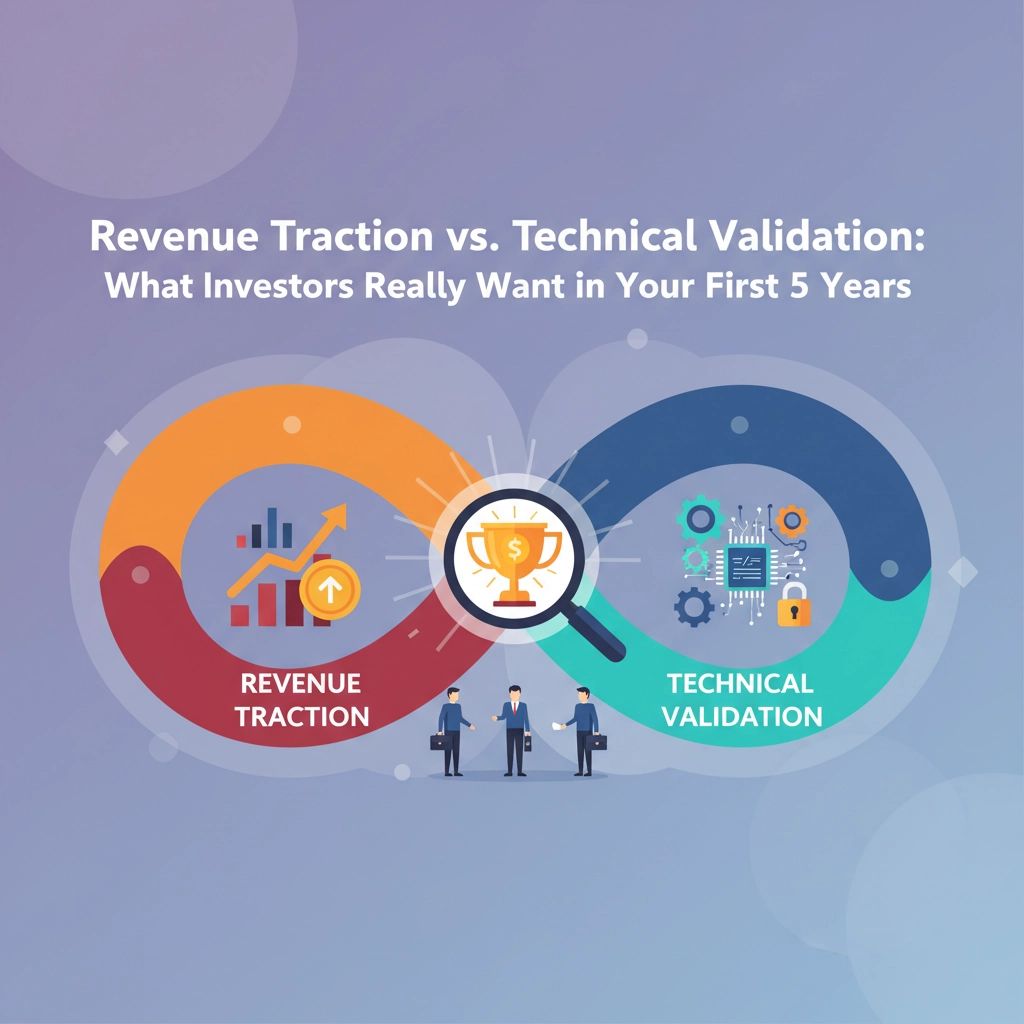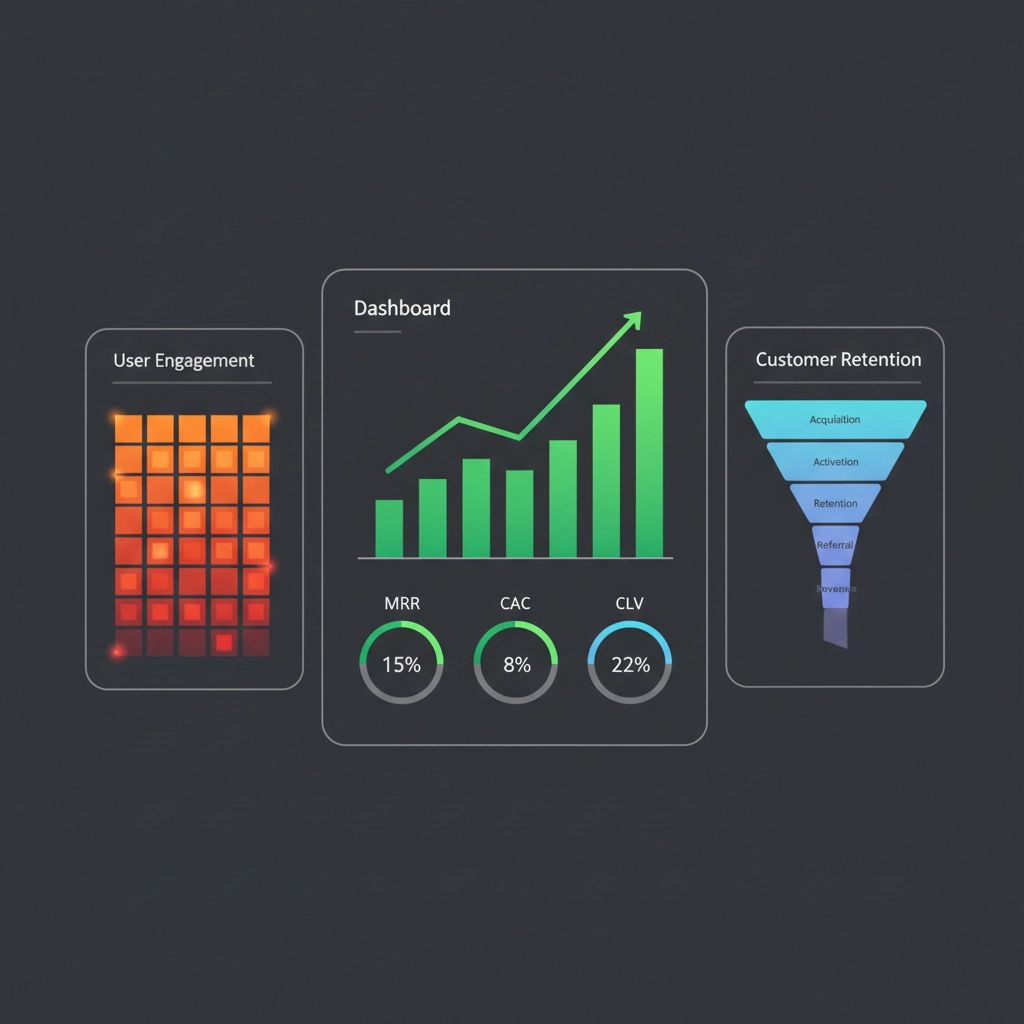Revenue Traction vs. Technical Validation: What Investors Really Want in Your First 5 Years
Nov 12, 2025
Here's something I unpacked in Deeptech Insider #29: Why Your Competitors Will Outfund You (Unless You Fix This) that keeps coming up in deeptech and healthtech founder conversations: you can have the most brilliant technology in the world, but if you can't show investors that people will actually pay for it, you're stuck. That’s exactly why #29 leans hard into fundraising discipline, burn rate control, and outfunding strategies—because investors weigh early revenue traction more heavily than pure technical validation when deciding who gets the next round. For more on this, see my posts on being outfunded by competitors and capital-efficient, exit-first execution.
This isn't just theory. I've seen too many deeptech and healthtech founders get trapped in what I call the "endless proof-of-concept loop": constantly proving their technology works while never proving the market wants to buy it. Meanwhile, competitors with inferior tech but better revenue stories are beating them at the fundraising game.
The reality? Investors care about returns, not just innovation. And returns come from revenue, not research papers.
Why Revenue Wins Every Time
Let's be blunt: revenue is the ultimate validator. When customers pay for your solution, they're voting with their wallets. That vote carries more weight than any technical benchmark or proof-of-concept demo.
For deeptech founders, this creates a unique challenge. Your technology might take years to perfect, but investors need to see market traction much sooner. The same goes for healthtech founders navigating regulatory pathways: you can't wait for FDA approval to start showing market demand signals.

Here's what I tell founders: revenue doesn't just prove your technology works. It proves three critical things investors care about:
Market demand exists. Paying customers validate that your solution addresses a real problem worth solving. This matters more than any market research report.
Your business model works. Revenue demonstrates that you can convert interest into sales, price appropriately, and deliver value consistently.
You can execute. Moving from concept to cash flow requires operational excellence, team coordination, and customer relationship management: all critical execution skills.
The Technical Validation Trap
Don't get me wrong: technical validation matters. But it's not enough on its own, and here's where many founders get stuck.
Technical validation answers "Can we build it?" But investors need to know "Will people buy it?" These are fundamentally different questions, and answering only the first one leaves you vulnerable.
I've seen brilliant deeptech founders spend years perfecting their algorithms while competitors with "good enough" technology capture market share. In healthtech, I've watched teams obsess over clinical endpoints while losing sight of commercial viability.
The problem compounds when you're competing for investor attention. As I outlined in my post about being outfunded by competitors, technical superiority alone won't win funding rounds. Investors bet on businesses, not just breakthroughs.
What Investors Actually Want to See in Your First 5 Years
Here's the progression smart founders follow, whether you're in deeptech or healthtech:
Year 1-2: Proof of Concept + Early Market Signals
You're still building, but you're already gathering market intelligence. For deeptech, this might mean signed letters of intent or pilot agreements. For healthtech, it could be key opinion leader endorsements or early adoption in non-regulated markets.
Year 3: First Revenue
This doesn't have to be massive, but it needs to be real. Even $10K in revenue proves customers will pay. For regulated healthtech companies, this might come from adjacent markets or pre-approval sales of related services.
Year 4-5: Accelerating Growth
Now you're proving scalability. Investors want to see month-over-month growth, expanding customer bases, and improving unit economics.

The timeline matters because of exit realities. VCs need acquisitions to happen within 5-7 years to generate acceptable returns. The longer you take to reach an exit, the lower their internal rate of return (IRR). This puts pressure on founders to show commercial traction quickly.
The Metrics That Matter Most
Beyond raw revenue numbers, investors track specific metrics that reveal business health:
Monthly Recurring Revenue (MRR): Shows predictable income streams and customer retention.
Customer Acquisition Cost (CAC): Proves you can scale customer growth efficiently.
Customer Lifetime Value (CLV): Demonstrates long-term profitability potential.
Churn Rate: Reveals customer satisfaction and product stickiness.
For pre-revenue startups, engagement metrics become crucial interim indicators. Daily active users, session duration, and feature adoption rates provide early validation of product-market fit before revenue streams are established.
Strategy for Deeptech Founders
Deeptech founders face unique challenges because your technology might be years ahead of market readiness. Here's how to bridge that gap:
Focus on Adjacent Markets: While developing your core technology, identify adjacent applications that can generate earlier revenue. A computer vision company might sell to retail analytics while developing autonomous vehicle applications.
Leverage Pilot Programs: Even if customers aren't ready to buy, they might pay for pilot programs or proof-of-concept implementations. This generates revenue while validating technical capabilities.
Build Strategic Partnerships: Partner with established companies who can provide market access and validation. These relationships often lead to early revenue opportunities.
Strategy for Healthtech Founders
Healthtech founders navigate regulatory requirements that can delay revenue, but there are ways to demonstrate commercial viability:
International Markets: Consider markets with faster regulatory pathways to generate early revenue while pursuing domestic approvals.
Adjacent Services: Offer consulting, data analysis, or training services related to your core technology while awaiting regulatory approval.
B2B2C Models: Partner with healthcare providers or payers who can validate demand and potentially provide early revenue through pilot programs.

When Technical Validation Still Matters
Don't abandon technical validation entirely. It serves crucial purposes in specific contexts:
Deep Science Breakthroughs: If you're working on fundamental science breakthroughs, technical validation establishes feasibility before market development.
Regulatory Requirements: Healthtech companies need technical validation for regulatory submissions, even while pursuing commercial validation.
Strategic Partnerships: Technical validation can unlock partnerships with larger companies who provide market access and validation.
The key is pursuing both simultaneously, not sequentially.
Building Your Dual-Track Strategy
The most successful founders I work with develop what I call a "dual-track strategy": advancing technical development while simultaneously building market traction.
Track 1: Technical Development
Continue improving your core technology, but set specific milestones tied to market opportunities rather than abstract performance metrics.
Track 2: Commercial Development
Identify the earliest possible revenue opportunities, even if they're not your ultimate market. Use these to generate cash flow and validate market demand.
This approach addresses both investor concerns and operational realities. You're proving technical feasibility while demonstrating commercial viability.
The Exit Strategy Connection
Remember, investors are thinking about exits from day one. As I discussed in my post about why every deeptech founder needs an endgame, your validation strategy should align with potential acquirer interests.
Strategic acquirers care about market opportunity and competitive positioning as much as technical capabilities. Financial acquirers focus heavily on revenue growth and profitability potential. Both require evidence that goes beyond pure technical validation.
Your Next Steps
Start by auditing your current validation approach. Are you spending 90% of your time proving technical feasibility and 10% proving market demand? If so, rebalance immediately.
Identify your earliest possible revenue opportunity, even if it's not your ultimate vision. Use this to start generating market feedback and investor confidence while you continue technical development.
Most importantly, remember that investors are betting on businesses, not just breakthroughs. The combination of technical excellence and commercial validation creates the compelling story that wins funding rounds and builds sustainable companies.
Your technology might be revolutionary, but without revenue, it's just an expensive research project. In your first five years, prove both that you can build it and that people will buy it. That's what investors really want to see.